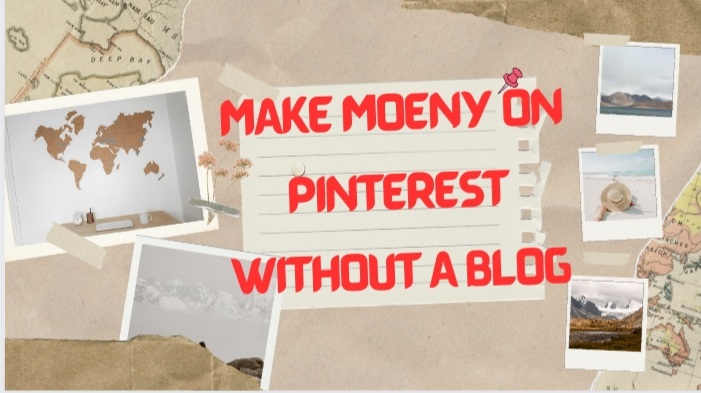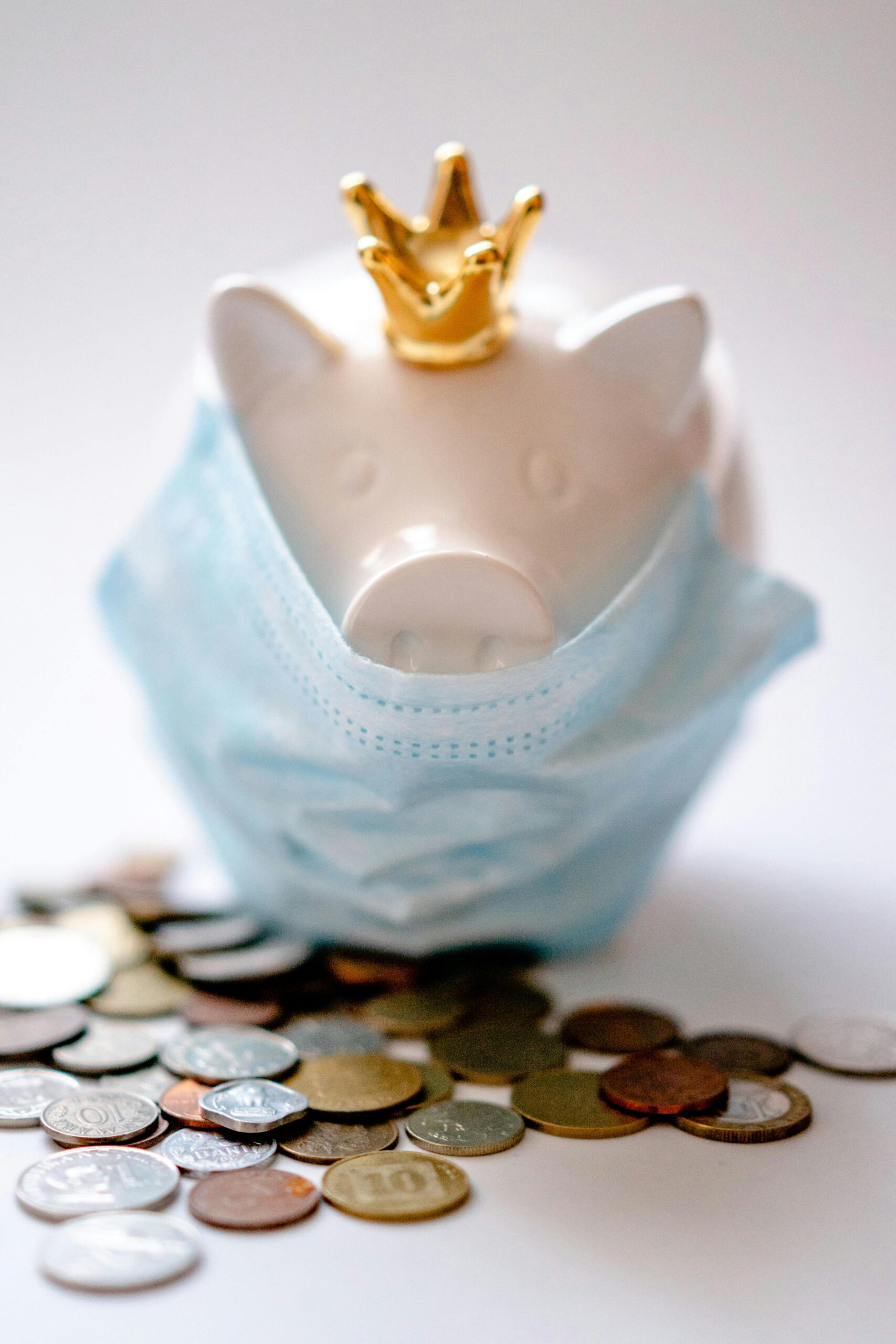Pinterest has evolved from a simple photo-sharing platform to a powerful tool for businesses and individuals alike to showcase their products, services, and expertise. In this guide, we’ll explore how to make money on Pinterest without a blog. Whether you’re a seasoned entrepreneur or just starting, these steps will walk you through the process of leveraging Pinterest to generate income.
What is Pinterest
Pinterest is a visual discovery and bookmarking platform that allows users to discover, save, and share ideas and inspiration through images and videos. It’s often described as a virtual pinboard where users can collect and organize content on various topics or themes, such as recipes, home decor, fashion, travel, and more. Users can browse through millions of pins created by other users, save them to their own boards, and follow accounts to stay updated on new content. Additionally, Pinterest offers features like search, recommendations, and analytics to help users find what they’re looking for and track their interests. Overall, Pinterest is a valuable resource for finding inspiration, planning projects, and discovering new trends and ideas.
Table of Contents
Understanding Pinterest’s Potential:
Pinterest isn’t just a place for saving recipes and DIY projects; it’s a visual search engine with over 400 million active users. This massive audience presents a golden opportunity for monetization, even without a blog.
Setting Up Your Pinterest Profile:
Your Pinterest profile serves as your virtual storefront. Make sure it’s complete with a clear, professional photo or logo, and a captivating bio that highlights your expertise or niche.
Choosing Your Niche or Interest:
Decide what topics or themes you want to focus on. Whether it’s fashion, home decor, or personal finance, choose something you’re passionate about and knowledgeable in.
Creating Boards that Stand Out:
Boards are like categories where you organize your pins. Create boards that reflect your interests and showcase your expertise. Use eye-catching cover images and descriptive titles.
Adding Pins to Your Boards:
Pins are the images or videos you save to your boards. Start by pinning content that’s relevant to your niche. You can save your own content or repin others’ content that aligns with your brand.
Developing a Pinning Strategy:
Consistency is key on Pinterest. Create a pinning schedule and stick to it. Aim to share a mix of your own content and curated content from others.
Understanding Pinterest’s Algorithm:
Pinterest uses an algorithm to determine which pins to show to users. Focus on creating high-quality, relevant content that resonates with your audience to improve your visibility.
Joining Group Boards for Exposure:
Group boards are collaborative boards where multiple users contribute pins. Joining relevant group boards can help you reach a larger audience and increase your exposure.
Utilising Pinterest Analytics:
Pinterest offers analytics tools that allow you to track the performance of your pins and boards. Pay attention to metrics like impressions, clicks, and saves to gauge what’s working and what’s not.
How to make money on Pinterest without a blog
Exploring Affiliate Marketing on Pinterest:
Affiliate marketing involves promoting products or services and earning a commission for sales or referrals. Look for affiliate programs that align with your niche and promote products through your pins.
Creating Compelling Pins:
Pins should be visually appealing and informative. Use high-quality images, clear titles, and concise descriptions to capture users’ attention and encourage them to click through.
Promoting Products and Services:
If you have your own products or services, create pins that lead directly to your sales pages or online store. Highlight the benefits and features of your offerings to entice potential customers.
Partnering with Brands for Sponsored Content:
Collaborating with brands can be a lucrative way to monetize your Pinterest presence. Reach out to brands that align with your niche and offer to create sponsored content that promotes their products or services.
Selling Products Through Pinterest:
Pinterest offers features like buyable pins and shopping catalogs that make it easy to sell products directly on the platform. Set up a Pinterest shop and optimize your product listings for maximum visibility.
Offering Services and Expertise:
Showcase your skills and expertise through your pins and offer services such as consulting, coaching, or freelance work. Use Pinterest to demonstrate your value and attract potential clients.
Driving Traffic to Other Platforms:
Use Pinterest to drive traffic to other platforms where you monetize your content, such as YouTube, Etsy, or online courses. Create pins that tease your content and encourage users to click through to learn more.
Building Your Email List Through Pinterest:
Offer valuable content or incentives in exchange for users’ email addresses. Create pins that lead to landing pages where users can sign up for your email list.
Creating Compelling Landing Pages:
Landing pages are web pages designed to convert visitors into leads or customers. Create landing pages that are visually appealing, easy to navigate, and optimized for conversions.
Maximizing Your Pinterest ROI:
Continuously monitor your Pinterest analytics and adjust your strategy based on what’s working and what’s not. Experiment with different pin formats, posting times, and content types to maximize your return on investment.
Staying Up-to-Date with Pinterest Trends:
Pinterest is constantly evolving, with new features and trends emerging regularly. Stay informed about the latest updates and trends to keep your Pinterest strategy fresh and effective.
Measuring and Analyzing Your Success:
Use Pinterest analytics to track key metrics like engagement, traffic, and conversions. Analyze this data to understand what’s resonating with your audience and where there’s room for improvement.
Troubleshooting Common Pinterest Challenges:
If you encounter issues or obstacles while monetizing Pinterest, don’t get discouraged. Seek out resources, join communities, and experiment with different strategies until you find what works for you.
Scaling Your Pinterest Strategy for Long-Term Success:
As your Pinterest presence grows, look for opportunities to scale your strategy and expand your reach. Consider outsourcing tasks, investing in advertising, or diversifying your monetization channels.
Celebrating Your Successes:
Take time to celebrate your achievements and milestones along the way. Whether it’s reaching a certain number of followers, earning your first affiliate commission, or launching a successful product, acknowledge and appreciate your progress.
Continuing to Learn and Grow:
The world of Pinterest and online marketing is constantly evolving. Stay curious, keep learning, and be open to trying new strategies and techniques. With dedication and persistence, you can continue to grow and succeed in monetizing Pinterest without a blog.
Leveraging Pinterest Ads for Increased Visibility:
Pinterest offers advertising options to boost the visibility of your pins and reach a wider audience. Explore different ad formats such as Promoted Pins and carousel ads to amplify your presence on the platform.
Building a Community Around Your Brand:
Foster engagement and loyalty by building a community around your brand on Pinterest. Encourage user-generated content, host contests or giveaways, and interact with your audience to cultivate a sense of belonging and connection.
Implementing Pinterest SEO Best Practices:
Optimize your pins and boards for search engines within Pinterest by incorporating relevant keywords, using descriptive titles and descriptions, and organizing your content strategically. Pinterest SEO can help improve your discoverability and drive organic traffic to your profile.
Conclusion:
Pinterest offers endless opportunities for individuals and businesses to make money without the need for a blog. By following the steps outlined in this guide, you can leverage Pinterest’s vast audience, visual nature, and powerful features to monetize your expertise, products, or services. Whether you’re a seasoned marketer or a newcomer to the platform, there’s potential for growth and success on Pinterest.
FAQs (Frequently Asked Questions):
Q1: Do I need a blog to make money on Pinterest?
A1: No, you can make money on Pinterest without a blog by leveraging features such as affiliate marketing, selling products directly, offering services, and driving traffic to other platforms.
Q2: Can I make a full-time income from Pinterest?
A2: Yes, many people have successfully built profitable businesses and careers using Pinterest as their primary platform. However, it requires dedication, consistency, and strategic planning to achieve significant income levels.
Q3: How long does it take to results on Pinterest?
A3: The timeline for seeing results on Pinterest varies depending on factors such as your niche, audience engagement, and the effectiveness of your strategy. Some users may see results within a few weeks, while others may take several months to gain traction.
Q4: Is it necessary to invest money in advertising on Pinterest?
A4: While investing in Pinterest ads can accelerate your growth and visibility, it’s not mandatory for making money on the platform. Many users have achieved success organically through strategic pinning, content creation, and community engagement.
Q5: Can I use Pinterest if I’m not a visual-based business?
A5: Yes, Pinterest caters to a wide range of interests and niches beyond just visually-based businesses. Whether you’re in finance, health, technology, or any other industry, you can leverage Pinterest’s features and audience to your advantage with the right approach.




